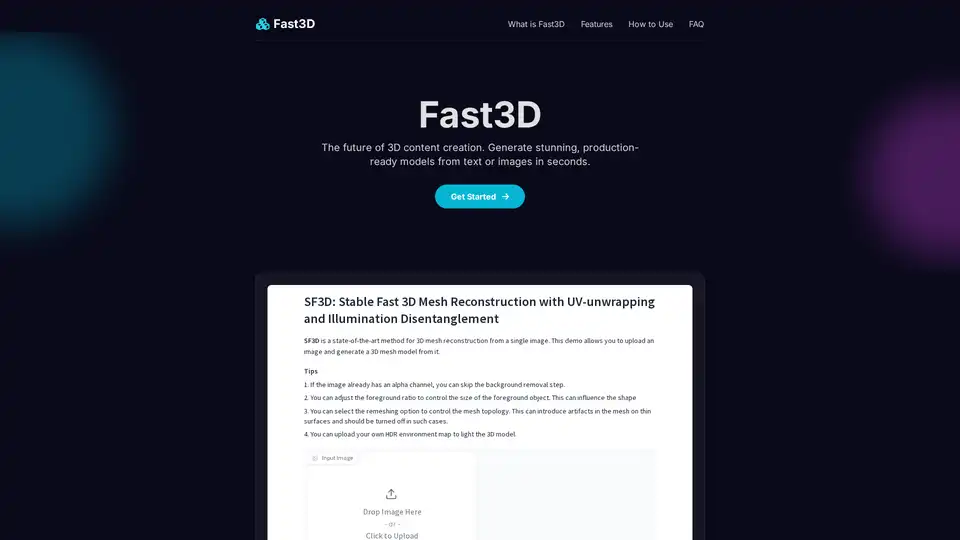
Fast3D
Overview of Fast3D
What is Fast3D?
Fast3D represents a breakthrough in AI-driven 3D content creation, enabling users to generate stunning, production-ready 3D models from simple text prompts or images in mere seconds. At its core, Fast3D is an AI-powered platform and model ecosystem designed to democratize 3D asset generation for creators, developers, and industries like gaming, AR/VR, and design. Unlike traditional 3D modeling tools that require extensive manual effort and expertise, Fast3D leverages advanced artificial intelligence to automate the process, producing optimized geometry, UV mapping, and physically based rendering (PBR) textures automatically.
The primary embodiment of Fast3D is the Fast3D AI Model Generator, a user-friendly platform accessible via websites like Fast3D.io. It supports multi-modal inputs, allowing you to describe a concept in words—such as "a futuristic armchair"—or upload a reference image, and receive a high-fidelity 3D model ready for export in formats like GLB, FBX, or OBJ. This tool is particularly notable for its speed: models can be created in as little as 10 seconds, making it ideal for rapid iteration and prototyping.
Complementing this is Stable Fast 3D (SF3D) by Stability AI, an open-source model that focuses on single-image 3D mesh generation. SF3D excels at producing UV-unwrapped meshes with predicted material properties like roughness and metallicity, including a 'delighting' step to normalize lighting for seamless integration into game engines. Licensed freely for individual and academic use, it underscores Fast3D's commitment to accessibility.
Other contexts, such as Fast3D for MLLMs (multi-modal large language models) research—a token pruning framework for accelerating 3D scene understanding—and the Fast3D Renderer for emulating Nintendo 64 graphics, highlight the term's broader ecosystem. However, the AI model generator remains the most prominent and practical application for everyday users seeking fast 3D content creation.
How Does Fast3D Work?
Fast3D operates on cutting-edge AI architectures, combining generative models with 3D reconstruction techniques to translate 2D inputs into fully realized 3D assets. For text-to-3D generation, the system uses natural language processing to interpret prompts and diffusion-based models to synthesize geometry and textures. When an image is provided, computer vision algorithms analyze depth, edges, and semantics to extrapolate a 3D form, applying neural rendering for realistic materials.
The workflow is streamlined for efficiency:
- Input Processing: Users submit a text description or image via the platform's interface.
- AI Inference: The model runs inference, generating an initial mesh and applying optimizations like UV unwrapping and PBR texturing. In SF3D, this includes predicting advanced material properties to ensure compatibility with real-time engines.
- Post-Processing: A delighting mechanism removes lighting artifacts, and the output is refined for low polygon counts and adaptable illumination, ensuring performance in resource-constrained environments.
This plug-and-play approach minimizes computational overhead—SF3D can produce a textured model in under a second—while maintaining high accuracy on benchmarks for 3D understanding. For developers, API integration allows embedding Fast3D into automated pipelines, enabling scalable asset creation without sacrificing quality.
Core Features of Fast3D
Fast3D stands out with features tailored for speed, quality, and versatility:
- Rapid Generation: Create production-quality 3D models in 10 seconds or less, accelerating workflows from concept to implementation.
- Multi-Modal Support: Handles both text prompts and single images, broadening creative possibilities for users without specialized skills.
- Production-Ready Outputs: Includes optimized geometry, detailed UV mapping, PBR textures, and material predictions for immediate use in professional projects.
- Export Flexibility: Supports industry-standard formats (GLB, FBX, OBJ) for easy import into tools like Unity, Unreal Engine, or Blender.
- Technical Optimizations: Low-poly designs and real-time friendly features like delighting make assets suitable for gaming and interactive applications.
- API Automation: For enterprises, API access facilitates bulk generation and integration into content creation pipelines.
These features address common pain points in 3D modeling, such as time-intensive sculpting and texturing, by automating them with AI precision.
How to Use Fast3D
Getting started with Fast3D is intuitive, designed for beginners and experts alike. Here's a step-by-step guide:
- Access the Platform: Visit Fast3D.io or explore Stability AI's SF3D repository for open-source implementation.
- Provide Input: Enter a descriptive text prompt (e.g., "a rustic wooden table in a forest setting") or upload an image. For best results, use clear, detailed descriptions focusing on shape, style, and materials.
- Generate the Model: Click to process—the AI handles the rest, outputting a preview within seconds.
- Refine and Export: Review the model, make minor adjustments if needed via the interface, and download in your chosen format.
- Integrate into Projects: Import directly into game engines, design software, or AR/VR environments for further use.
For advanced users integrating SF3D, install via GitHub, prepare your input data, and run inference scripts. The process is lightweight, requiring minimal setup for quick experimentation.
Tips for optimal results include starting with high-contrast images for better depth estimation and iterating prompts to refine details, such as adding specifics like "metallic finish" for accurate material rendering.
Why Choose Fast3D?
In a landscape dominated by slow, skill-intensive 3D tools, Fast3D offers unparalleled speed and accessibility. It saves developers hours in prototyping, allowing focus on innovation rather than grunt work. The high-quality outputs—boasting realistic textures and optimizations—rival manually crafted assets, yet at a fraction of the time and cost.
From an SEO perspective, Fast3D aligns with rising searches for 'AI 3D generators' and 'text-to-3D tools,' positioning it as a go-to solution for queries like "best way to create 3D game assets quickly." Its open-source elements foster community contributions, enhancing reliability through collective improvements. Moreover, compliance with free licensing for non-commercial use lowers barriers for hobbyists and educators.
Compared to alternatives, Fast3D's multi-modal input and delighting feature provide superior usability for metaverse and gaming applications, where seamless integration is key.
Who is Fast3D For?
Fast3D caters to a diverse audience:
- Game Developers: Ideal for rapid prototyping of props, environments, and characters to populate levels and test ideas without full art teams.
- AR/VR Creators: Generates immersive assets for virtual experiences, streamlining cross-platform development.
- Designers and Architects: Quickly visualize concepts for products, furniture, or spaces from sketches or descriptions.
- AI Researchers: Leverages models like SF3D for experiments in 3D generation and MLLM acceleration.
- Hobbyists and Students: Free tiers and simple interfaces make it accessible for learning 3D without steep learning curves.
Whether you're building the next metaverse or just experimenting with digital art, Fast3D empowers users to bring ideas to life effortlessly.
Applications in Gaming and Beyond
In gaming, Fast3D shines for creating static assets like backgrounds, clutter, and customizable items, enriching worlds while maintaining performance. It supports automated pipelines for live events or procedural generation, scaling content creation dynamically.
Beyond gaming, it aids AR/VR by producing lightweight models for mobile apps and metaverse platforms. In design, it's perfect for e-commerce visualizations or architectural mockups. Research applications, like the MLLM framework, push boundaries in efficient 3D scene analysis, achieving high benchmarks in accuracy and speed.
The N64 renderer niche appeals to retro gaming enthusiasts, emulating classic graphics with modern APIs for accurate preservation.
Practical Value and Future Trends
Fast3D's value lies in its ability to cut production times by up to 90%, fostering creativity and reducing costs. Users report boosted iteration cycles, leading to more innovative designs. For instance, in game dev, it enables solo creators to compete with larger studios by automating asset pipelines.
Looking ahead, trends point to deeper integration with real-time engines and expanded multi-modal capabilities, potentially including video inputs. As AI evolves, Fast3D could evolve into full procedural worlds, revolutionizing industries reliant on 3D content.
For commercial users, check licensing—SF3D is free for academics, but platforms like Fast3D.io may offer paid tiers for heavy usage. FAQs confirm its suitability for professional assets, with robust export options and commercial viability.
In summary, Fast3D isn't just a tool; it's a catalyst for the future of 3D creation, blending AI efficiency with creative freedom to meet the demands of modern digital landscapes.
Best Alternative Tools to "Fast3D"
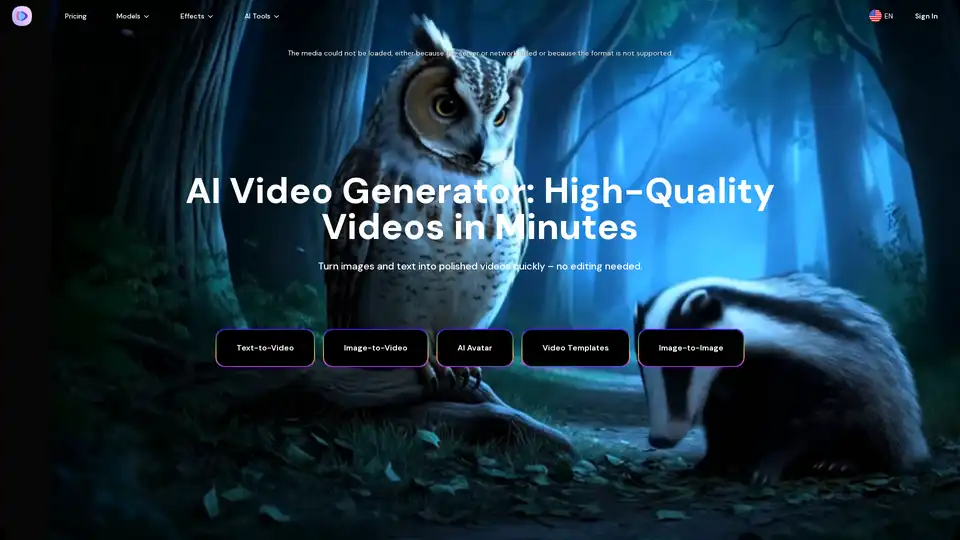
Image-to-Video Maker is an AI video generator that turns text, images, or video clips into high-quality videos. It offers features like text-to-video, image-to-video, AI avatars, and video upscaling, all within a single platform.
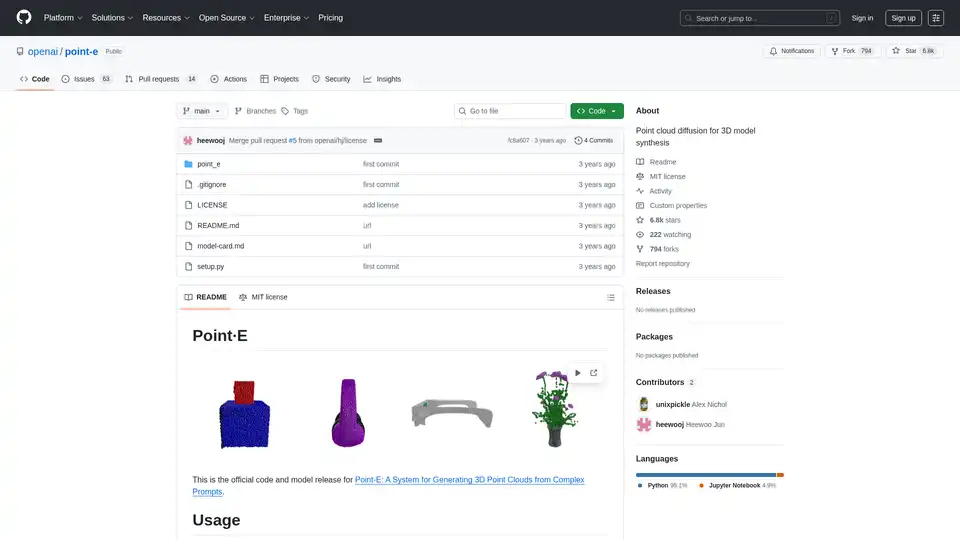
Generate 3D point clouds from text or images with Point-E, an open-source diffusion model by OpenAI. Create 3D models easily using text prompts or image inputs.

Explore AI Library, the comprehensive catalog of over 2150 neural networks and AI tools for generative content creation. Discover top AI art models, tools for text-to-image, video generation, and more to boost your creative projects.

3D AI Studio is an AI toolkit that enables users to effortlessly transform text or images into high-quality 3D assets. Unleash your creativity with 3D AI Studio – the future of 3D assets.
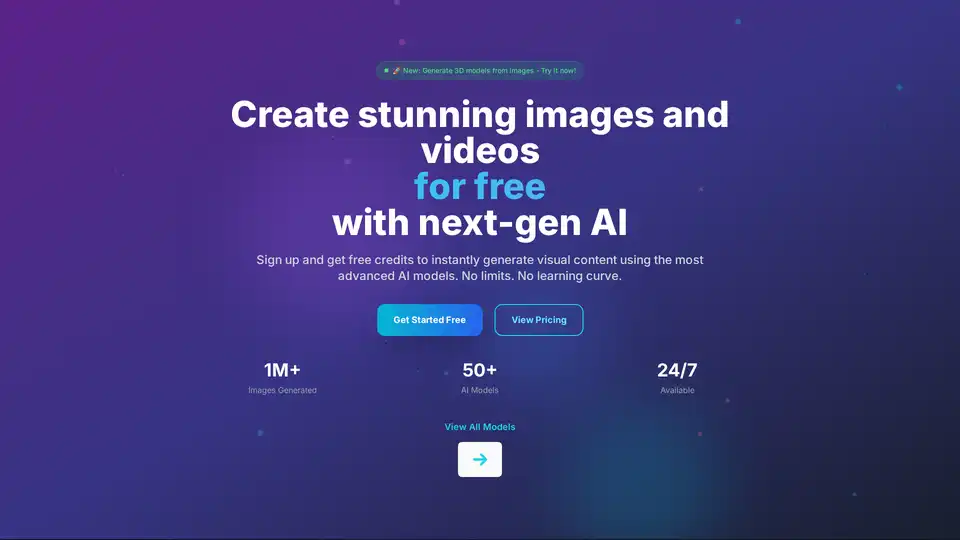
PICOAI.app offers cutting-edge AI tools to generate stunning images and videos. Create professional content effortlessly using the latest generative AI models.
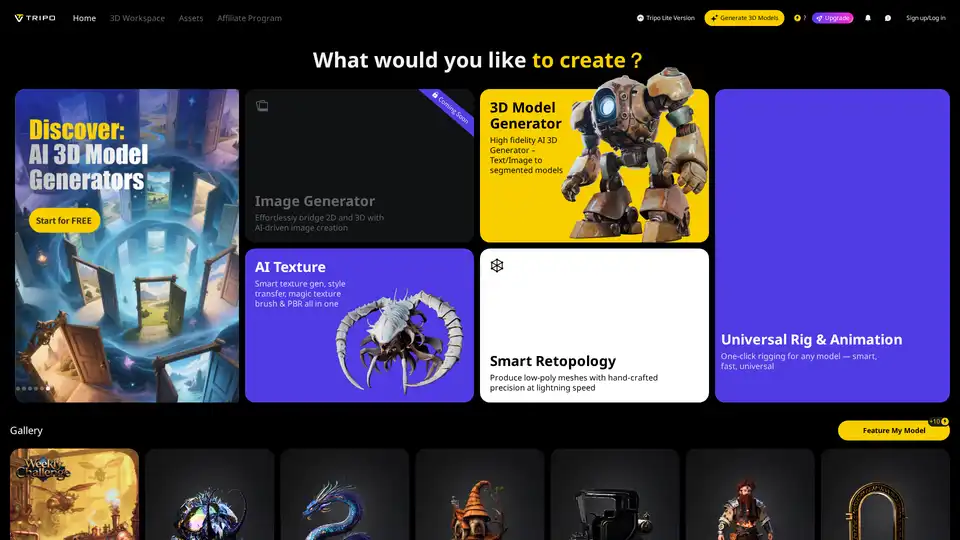
Tripo Studio is an AI-driven 3D workspace offering controllable generation of 3D models from text or images, with tools for texturing, retopology, rigging, and animation to streamline creator workflows.
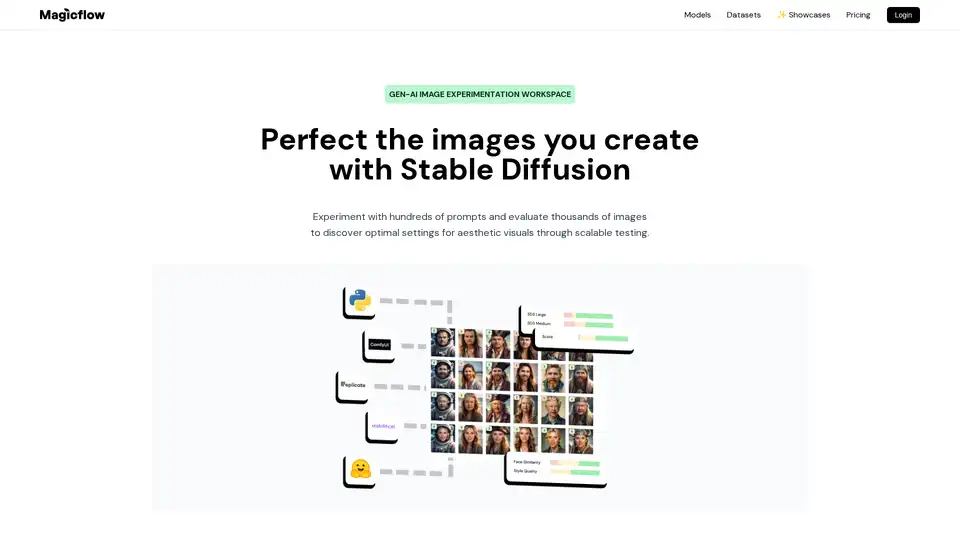
Magicflow AI is a generative AI image experimentation workspace that enables bulk image generation, evaluation, and team collaboration for perfecting Stable Diffusion outputs.
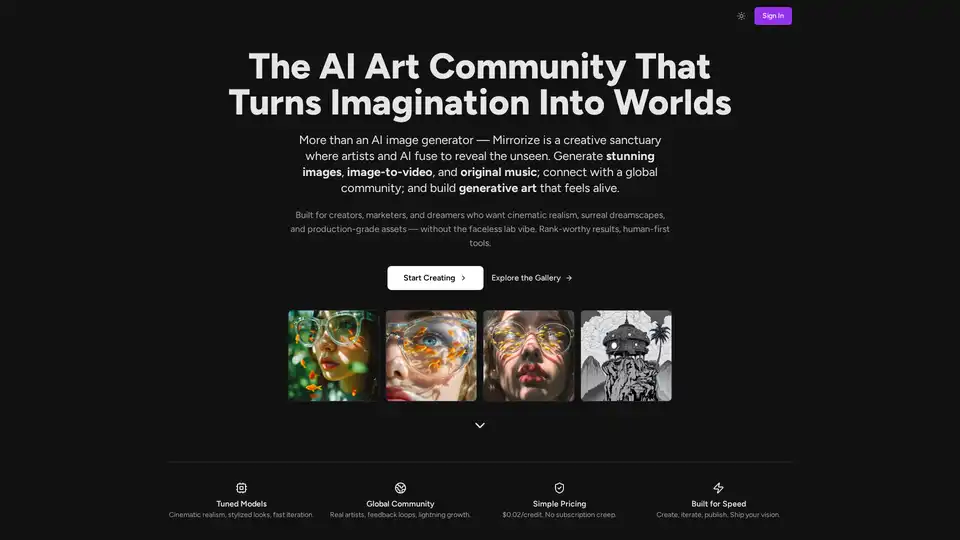
MirrorizeAI is a vibrant AI art community empowering creators to generate stunning images, videos, and music with cinematic realism. Collaborate globally, iterate fast, and unlock your imagination without subscriptions.

TrainEngine.ai allows users to train image models like Stable Diffusion XL, chain them together, and generate unlimited AI art assets. Ideal for creating custom AI-generated images from trending themes.

Discover Nano Banana AI, powered by Gemini 2.5 Flash Image, for free online image generation and editing. Create consistent characters, edit photos effortlessly, and explore styles like anime or 3D conversions at NanoBananaArt.ai.

FutureTools Collects & Organizes All The Best AI Tools So YOU Too Can Become Superhuman!

Experience Genie 3, the revolutionary world model that generates interactive environments in real-time at 24 FPS. Create dynamic worlds from text prompts with unprecedented diversity, maintaining consistency for minutes at 720p resolution. Perfect for AI research, embodied agent training, and interactive content creation.
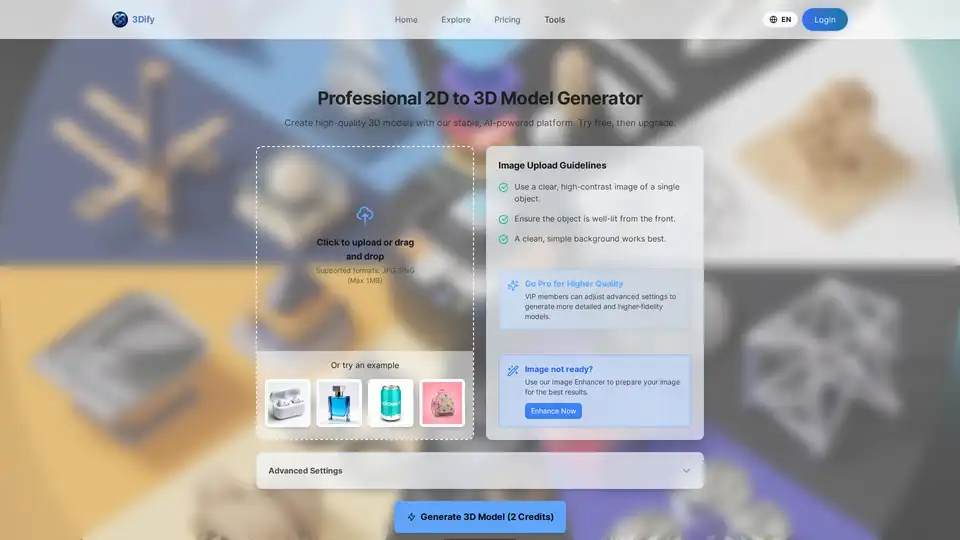
Create high-quality 3D models with our stable, AI-powered platform. Try free, then upgrade.

AI-powered search engine for searching 3D models and assets by picture across 3D stock marketplaces. Amazingly fast. Completely visual. Artist friendly.
